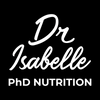BACK-TO-SCHOOL SAVINGS TIPS

In collaboration with Boulangerie St-Méthode
During back-to-school season, a family’s expenses can add up quickly: school supplies, clothes, athletic shoes, cafeteria meals, transportation, day care, etc. Preparing the kids’ lunches at home is a good way to save at this time of year. To make the most of it, everything starts at the grocery store with the following tips…
1. Look for promotions
Products featured in weekly flyers, along with long-term sales on preferred items, are a great opportunity to save. When food is on sale, stock up on non-perishable items… and make sure to take advantage of sales on perishable products that freeze well (particularly meat, fish, and bread).
2. Choose large sizes
Large sizes are more economical than individual formats, especially when it comes to non-perishable foods (e.g. pasta, canned legumes, nut butters, etc.) or foods you eat in large quantities. Simply portion the food in reusable containers when you get home.
3. Compare food price to weight
Comparing the price of food to its weight is the only way to determine which items offer you more for your money. Since product sizes vary, the full price of an item does not allow you to effectively compare one product to another. The price by weight can generally be found below the full price, in smaller text.
4. Do not hesitate to buy frozen fruits and vegetables
Frozen fruits and vegetables are often less expensive than fresh produce. They also retain their nutritional value and allow you to enjoy foods that may be out-of-season. Since they are frozen, they can be kept longer, which also helps prevent food waste—an added expense you should avoid.
5. Adopt plant-based proteins
Plant-based protein is less costly than animal protein and is very versatile in the kitchen. Legumes (like lentils, red beans, and chickpeas), along with soy-based foods (like tofu, tempeh, and textured vegetable protein or TVP), are excellent sources of protein. Plant-based protein also provides more fibre and less saturated fat than animal protein, which can be beneficial to heart health.
6. Choose high-quality grains
By choosing whole grains, the whole family will feel full faster. In other words, you won’t be surprised to find that teens who usually eat 4 slices of white bread toast for breakfast will be satisfied with just 2 slices of whole wheat toast! Choose brown rice, whole wheat couscous, oat flakes, and whole grain bread. They’ll keep you feeling fuller, for a longer time! Campagnolo’s 100% Whole Wheat Loaf provides 8 g of protein and 5 g of fibre per 2-slice serving… and, in addition to being a nutritious option, kids love it! This versatile bread is perfect as part of a hearty breakfast or a well-balanced lunch.
Summing up :
- Shopping for sales is a winning strategy.
- Large formats are more economical than individual formats.
- Comparing food prices by weight can get you more bang for your buck.
- Frozen fruits and vegetables are economical alternatives, while remaining just as nutritious as fresh produce.
- Plant-based protein is less expensive and higher in fibre than animal protein.
- Choose whole grains that provide a greater feeling of fullness.
@Mike : Bonjour Mike, c’est très gentil! Merci pour votre beau commentaire!
Bonjours Isabelle,
Sa fait quelque temps que je vous suie et je constate que vous êtes très différente des nutritionnistes que j’ai connu.
Vous pensez côté monétaire des gens et regardé les approche économique. Merci.
Vous semblez dire que les protéines végétales sont aussi bonne pour la santé. On m’a toujours cassé les oreilles que je devais mangé de la viande rouge (truc que je n’aime pas vraiment).
Plus que je vous lit et essai d’appliquer vos conseilles. Malheureusement je n’ai pas éliminé de poids mais je me sans moins gonflé et moins de maux de ventre. Je trouve ça super.
Merci pour tout vos trucs et conseilles gratuit j’apprécie énormément.Mike











2 comments